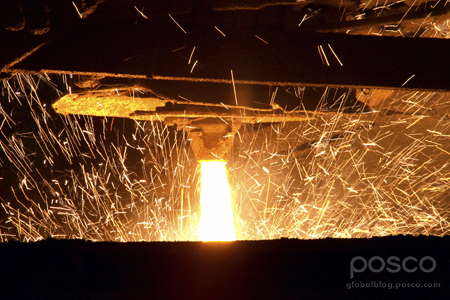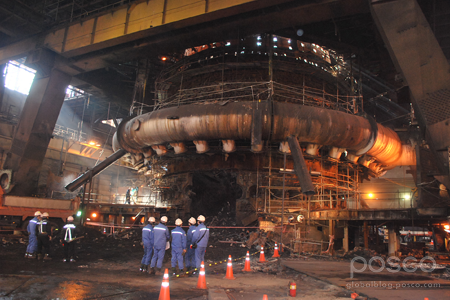Steel is a versatile material that plays a major role in everyday life—from shipping containers and automobiles to office buildings and food cans. At the same time, steel makes up the largest category of metals in the municipal solid waste (MSW) and industrial waste streams due to the byproducts produced in its manufacturing process.
This waste can lead to environmental pollution and, as such, many efforts have been made over the past two decades to decrease the waste and upcycle the byproducts. As a result of this growing environmental awareness, steel slag is now highly regarded as a recycled material that can reduce environmental impact due to its resource-conservation and energy-saving properties.
What’s Steel Slag?
 Slag, also known as steel aggregate, is the primary byproduct of steelmaking. The residue is comprised of minerals such as silica, alumina and titanium from ironsand, as well as other combinations of calcium and magnesium oxides derived from other raw materials.
Slag, also known as steel aggregate, is the primary byproduct of steelmaking. The residue is comprised of minerals such as silica, alumina and titanium from ironsand, as well as other combinations of calcium and magnesium oxides derived from other raw materials.
During smelting, slagging agents and fluxes are added to the blast furnace or steelmaking furnace to remove impurities from the iron ore, steel scrap and other ferrous feeds. The slags secure the liquid metal from outside oxygen and maintain temperature by forming a lid. Being lighter than the liquid metal, the slag floats and can be removed with ease. All steel slag products are then rigorously tested before being released on the market to ensure that they will not adversely affect the environment, and that they are suitable for the application in which they will be used.
How Its Used
Slag is being used extensively for various applications throughout the world including Brazil, Australia, China, throughout the European Union and the United States. In fact, it is estimated that 7 to 7.5 million metric tons (7.7 to 8.3 million tons) of steel slag is used each year in the United States alone for a range of applications.
 Because of its hydraulic property and the large bearing capacity it can provide, steel slag is often used as a road base course material. With high particle density and hardness, this slag has superior wear resistance, which makes it an excellent aggregate for asphalt concrete. Steel slag, when used in the asphalt layer, also makes roads safer to drive on by offering better skid resistance.
Because of its hydraulic property and the large bearing capacity it can provide, steel slag is often used as a road base course material. With high particle density and hardness, this slag has superior wear resistance, which makes it an excellent aggregate for asphalt concrete. Steel slag, when used in the asphalt layer, also makes roads safer to drive on by offering better skid resistance.
Moreover, due to its high angle of shearing resistance, high particle density and large weight per unit volume, steel slag is also used as a material for civil engineering works, ground improvement materials and cement. In fact, the use of slag to replace some of the Portland cement in concrete reduces the carbon footprint of concrete production, and generally improves the quality of the material.
Other applications of slag include rail ballast, soil conditioner, sewage treatment and even artificial ocean reefs. Through these applications, steel slag prevents landfill waste, reduces carbon dioxide emissions and helps preserve natural resources, among other environmental benefits. The sale of these byproducts is also economically sustainable, generating revenue for steel producers and forming the foundation of a profitable worldwide industry.
The widespread public awareness on the environmentally friendly features of steel slag, among other steel waste materials, has led to the significant increase in the recycling capabilities of steelmakers like POSCO, as well as the steel industry’s ongoing efforts to expand the utilization of these byproducts. As innovative technology developments and synergies with other industries continue to bring the steel industry closer to its goal of zero waste, the upcycling of byproducts such as steel slag remains the best possible solution for now.
